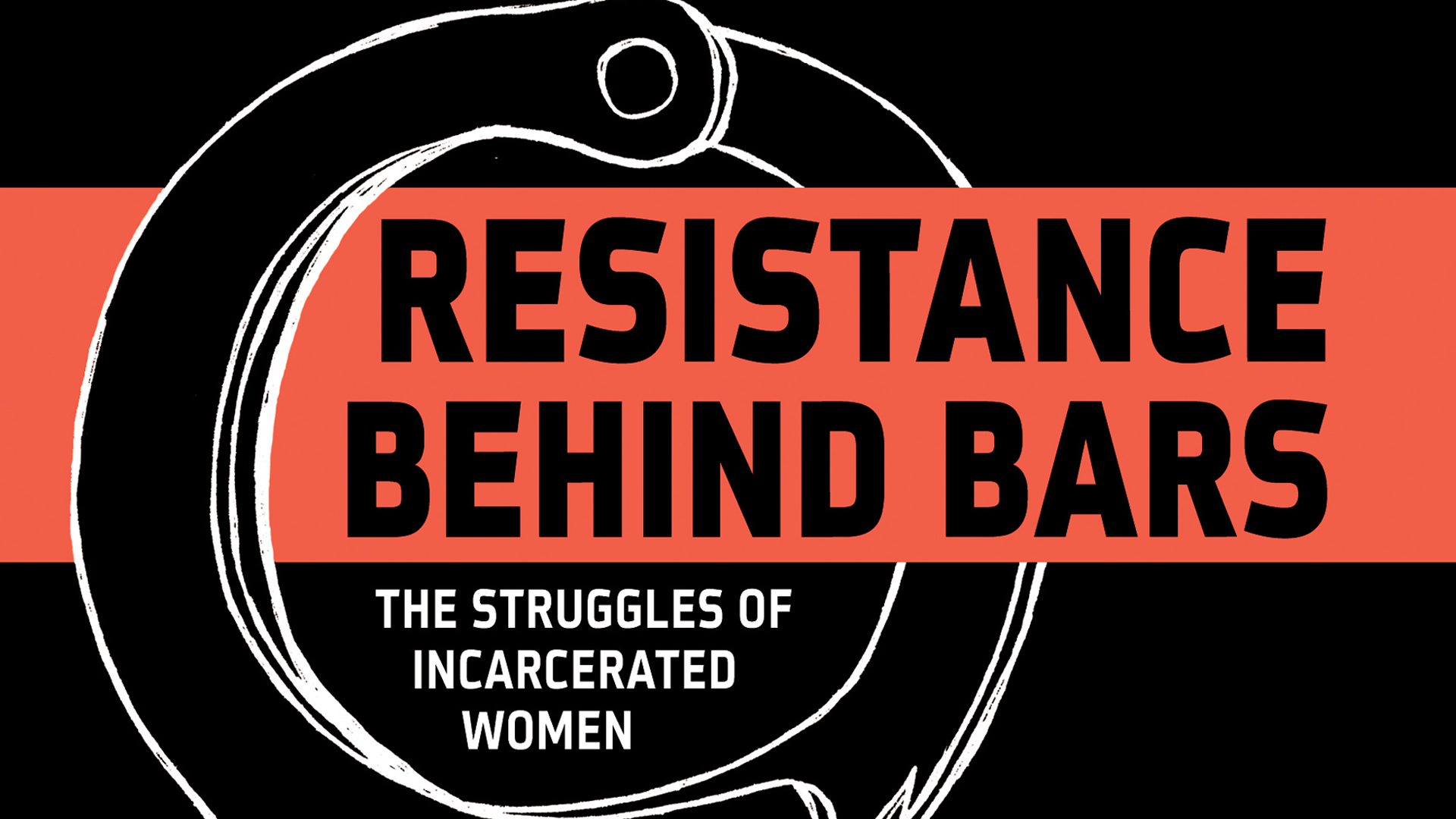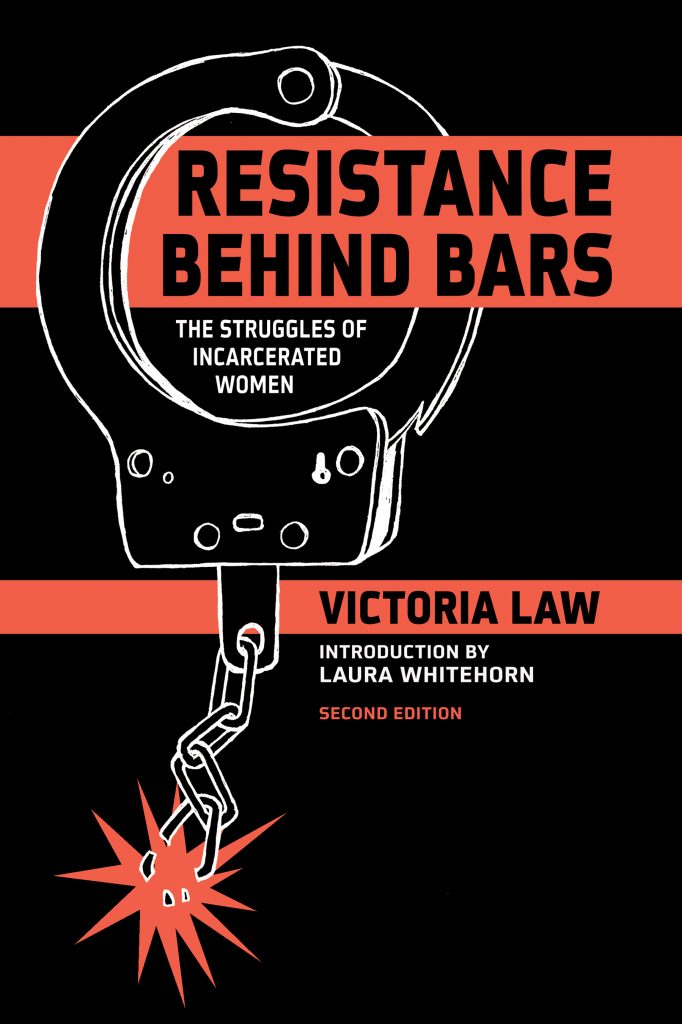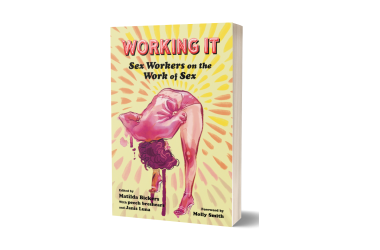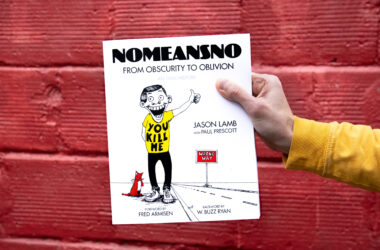By Kari Lyderson
Bitch
Spring 2009
In 1971 Attica prison uprising is well known, but many people—even those in activist scenes—haven’t heard of 1974’s August Rebellion or other uprisings by women in prison. New York photographer, writer, activist, and mother Victoria Law has been deeply involved with supporting and documenting the struggles of women in prison since her teenage years, when friends were incarcerated and she did a 36-hour stint in “the Tombs” in New York City for armed robbery. In her new book Resistance Behind Bars, Law uses comprehensive legal and social analysis, as well as the voices of incarcerated women themselves, to lay bare the racism and sexism that characterize the primal justice system in general and women’s incarceration specifically. In documenting the strength and resistance of these women Law offers a challenge to those on the outside to better understand and support their struggles.
One woman I spoke to had spent 10 years trying to contact every mainstream media outlet she could think of to expose the conditions of the prison she was in.
Your book is one of only several out there about women’s resistance movements in prisons, whereas men’s uprisings and rebellions are widely known. Why do you think this is? Is it because of sexism in the activist world? Is it in any way a concerted effort of prison officials or other powers?
I think the lack of attention to women’s resistance is a combination of [those] factors. When I first started asking about organizing and resistance among women in prison, I was told by several people actively involved in [male] prisoners-rights movements, “Women don’t organize.” [And] when people have looked at women-in-prison issues, they’re either not searching specifically for actions that the women themselves have taken to challenge and change some of their conditions, or they’re not recognizing them as [organized resistance].
What are some of the specific uprisings you’ve written about?
From the inception of women’s separate prisons, women have physically fought and rioted. In 1835, New York state opened its first prison for women. The conditions were so terrible that the women rioted, attacking and tearing the clothes off the prison matron and physical chasing away other officials with wooden food tubs.
Here’s a more recent example: In 1974, women at New York’s maximum-security prison at Bedford Hills protested the guards’ brutal beating of another prisoner. They fought off guards, took over several sections of the prison and held seven staff members hostage for two and a half hours. It wasn’t until male state troopers and [male] guards from men’s prisons were brought in that the rebellion was quashed. This uprising was called the August Rebellion and happened only three years after Attica, when prisoner issues were still a hot topic.
In 1975, women imprisoned in North Carolina held a sit-down demonstration to demand better medical care, improve counseling services, and get the prison laundry reopened. When prison guards attempted to end the protest by herding them into the gymnasium and beating them, the women used volleyball-net poles, chunks of concrete, and hoe handles to drive the guards out of the prison. Their rebellion was quelled only after the state called in over a hundred guards from other prisons.
How do women’s resistance movements in prison differ from move widely known men’s rebellions and movements?
We have to challenge ourselves to reconceptualize what is commonly thought of as resistance. Is doing peer education work and advocating for better medical treatment of incarcerated women with HIV/AIDS and Hepatitis C “resistance”? Yes, especially when you consider that women entering prison are more likely than both women not in prison and men entering prison to have HIV/AIDS and that prison healthcare is often negligent, sometimes to the point of being fatal.
In many cases, women were single heads of households before their arrest. This, combined with the long sentences that mandatory minimum laws carry, puts incarcerated women more at risk for losing their children. Because this issues affects incarcerated women disproportionately, women have organized more around this issue.
At Bedford Hills in New York, women organized [for] a children’s center and a foster care committee. In Florida, one federal prisoner surreptitiously organized the Free Bus Project, in which an outside organization paid for a bus that allowed the children of 48 women to travel 300 miles to visit their mothers, many for the first time since their mothers’ incarceration. Are these sexy, glamorous actions? No. Does this make them any less important and/or worthy of attention and support? No.
You cover the rampant sexual abuse and rape of women in prison in Resistance Behind Bars. What do you think are the keys to fighting on this issue?
I’m going to turn this question over to a woman who knows much better than I: This past October, I talked briefly with Mary Glover, who filed Glover v. Johnson in 1977 and won women incarcerated in Michigan the right to equal educational and vocational opportunities, [as well as] legal courses so that they could file more lawsuits against prison conditions. She is still involved in class-action lawsuits against the Michigan Department of Corrections, two of which are specifically about staff sexual abuse. I asked her what advice she would give to women seeking to challenge prison conditions today and this is what she said: “You have to be diligent and you have to seek outside assistance. As they clamped down on phone, visits and mail…I read the paper avidly. As a trustee and a unit rep, I could order newspapers for the library and read them. I would write them letters and send them to my mother, who would forward them. Figure out a way to get help, whether it’s from a local organization or the ACLU or the local women’s groups.”
At the same time, I think that people and organizations on the outside have to be willing to help. One woman I spoke to had spent 10 years trying to contact every mainstream media outlet she could think of to expose the horrific conditions of the prison she was in. She received no response from any of them excerpt for a form letter from the Washington Post. Not having been involved in political activity before her incarceration, she didn’t know about the existence of many more alternative and progressive e publications that might have been interest3ed in her experiences and surroundings.
You describe how your consciousness about prison issues was sparked by your brush with the law as a teenage. How do you think people who haven’t been incarcerated or had a loved one in that position can better understand and related to the experience?
Actually, my consciousness about prison issues wasn’t sparked by my own [experience], but by my peers’ arrests and incarceration at Rikers Island before that. I visited them and waited for hours in crowded waiting rooms filled with people, mostly women, who were mostly poor and working class. We got to know each other and know each others’ stories in those hours and hours of waiting each week. There’s one bus that goes to Rikers and you can wait up to an hour for the bus at times. Then you wait in the downstairs waiting room, sometimes for as long as half an hour. Then you go to the upstairs waiting room and wait up to three hours, depending on how crowded it is. You’re not allowed to bring anything with you to the waiting rooms and so that gives you a lot of time to get to know your fellow visitors. Looking back, that really illustrated what I would read later about who goes to prison and why. By the time I had my own brush with the law, I had some ideas about (if not any of the theory behind) incarceration and its issues.
People who haven’t been incarcerated or had a loved one incarcerated should read about the experiences of people in prison. Not just one book, not just two books, but a wide variety. Even if they do have a loved one in prison, it helps to read about prison experiences and realities. Sometimes people in prison try to protect their loved ones by glassing over hard realities. And remember, differences such as gender, ethnicity, type of prison or security level, etc etc, can make a huge difference.
How do you expect the prison-industrial complex and the situation of incarcerated women specifically to change under the Obama Administration?
I don’t expect [them] to change much. Remember that the New York City Correction Officers’ Benevolent Association was one of the first unions to endorse Obama in his run for president. In an October 2003 NAACP debate, Mr. Obama said he would vote to abolish mandatory minimum sentences. When he was running for president he changed [his statement], saying “immediately review sentences to see where we can be smarter on crime and reduce the ineffective warehousing of nonviolent drug offenders.” If the situation [changes] for the better, it’s because people both outside and inside are fighting for those changes.
Kari Lydersen is a Chicago-based staff writer for the Washington Post and the author of Out of the Sea and Into the Fire: Latin American—U.S. Immigration in the Global Age and the forthcoming Revolt on Goose Island (Melville House Press). Read more at karilydersen.com.






